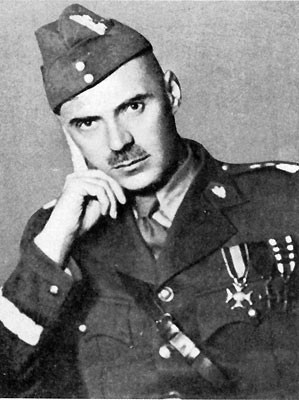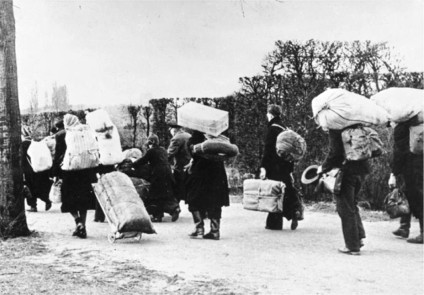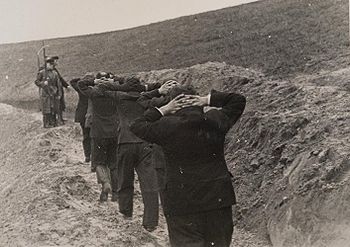Post by pjotr on Mar 3, 2013 17:42:37 GMT 1
History of the Germans in Poland
The history of the Germans in Poland dates back over a millennium. Poland was at one point the largest kingdom in Europe; it was also Europe's most multi-ethnic state during the medieval period. It covered an immense plain with no natural boundaries and had a thinly scattered population including many different ethnic groups--besides the Poles themselves, there were Germans in the cities of West Prussia and Ruthenians in Lithuania (and others). The immigrants were largely German settlers. The Polish princes granted the Germans in the cities complete autonomy according to the "Teutonic right" (later, "Magdeburg right"), and in that way in Poland there emerged cities of the German medieval type. Before the 13th century was over, around one hundred Polish towns had Magdeburg-style municipal institutions. The governing classes in these towns were increasingly German and German-speaking. At the synod of Łęczyca in 1285, Archbishop Jakub Świnka of Gniezno warned that Poland might become a "new Saxony" if German negligence for Polish language, customs, clergy and ordinary people went unchecked. Toward the end of the Middle Ages the population in a number of Polish cities was mostly German-speaking and even municipal documents were partly written in German (until the transition to Latin and later to Polish).

Archbishop Jakub Świnka of Gniezno
History
The 13th century brought fundamental changes to the structure of Polish society and its political system. Because of the fragmentation and constant internal conflicts, the Piast dukes were unable to stabilize Poland's external borders of the early Piast rulers. Western Farther Pomerania broke its political ties with Poland in the second half of the 12th century and from 1231 became a fief of the Margraviate of Brandenburg, which in 1307 extended its Pomeranian possessions even further east, taking over the Sławno and Słupsk areas. Pomerelia or Gdańsk Pomerania had been independent of the Polish dukes from 1227. In mid-13th century, Bolesław II the Bald granted Lubusz Land to the Margraviate, which made possible the creation of the Neumark and had far reaching negative consequences for the integrity of the western border. In the south-east, Leszek the White was unable to preserve Poland's supremacy over the Halych area of Rus', a territory that had changed hands on a number of occasions.
The social status was becoming increasingly based on the size of feudal land possessions. Those included the lands controlled by the Piast princes, their rivals the great lay land owners and church entities, all the way down to the knightly class; the work force ranged from hired "free" people, through serfs attached to the land, to slaves (purchased or war and other prisoners). The upper layer of the feudal lords, first the Church and then others, were able to acquire economic and legal immunity, which made them exempt to a significant degree from court jurisdiction or economical obligations (including taxation), that had previously been imposed by the ruling dukes.

Bolesław II the Horned
The civil strife and foreign invasions, such as the Mongol invasions in 1241, 1259 and 1287, weakened and depopulated the many small Polish principalities, as the country was becoming progressively more subdivided. The depopulation and the increasing demand for labor in the developing economy caused a massive immigration of West European peasants, mostly German settlers into Poland (early waves from Germany and Flanders in the 1220s). The German, Polish and other new rural settlements were a form of feudal tenancy with immunity and German town laws were often utilized as its legal bases. German immigrants were also important in the rise of the cities and the establishment of the Polish burgher (city dwelling merchants) class; they brought with them West European laws (Magdeburg rights) and customs which the Poles adopted. From that time the Germans, who created early strong establishments (led by patriciates) especially in the urban centers of Silesia and other regions of western Poland, had been an increasingly influential minority in Poland.
In 1228, the Acts of Cienia were passed and signed into law by Władysław III Laskonogi. The titular Duke of Poland promised to provide a "just and noble law according to the council of bishops and barons." Such legal guarantees and privileges included the lower level land owners—knights, who were evolving into the lower and middle nobility class known later as szlachta. The fragmentation period weakened the rulers and established a permanent trend in Polish history, whereby the rights and role of the nobility were expanded at the monarch's expense.

ładysław III Laskonogi
Eastward settlement
The phenomenon involved internal colonization, associated with rural-urban migration by natives, in which many of the Polish cities adopted laws based on those of the German towns of Lubeck and Magdeburg. Some economic methods were likewise imported from Germany.
Since the beginning of the 14/15th centuries, the Polish-Silesian Piast dynasty reinforced German settlers on the land, who in decades founded towns and villages under German town law, particularly under the law of the town Magdeburg (Magdeburg law).
The 1257 foundation decree issued by Bolesław V the Chaste for Kraków was unusual insofar that it explicitly separated the local Polish population that already lived in the city, in order to avoid depopulation of already existing settlements that would lead to loss of taxes.

Bolesław V the Chaste
Often, the Ostsiedlung settlement was founded near a pre-existing fortress that was within the already existing town, as for example with Poznan (Posen) and Kraków.

Map of German settlement in Poland and Czech and Elbe regions.
Silesia
The Ostsiedlung in Silesia was initiated by Bolesław I and especially by his son Henry I and his wife Hedwig in the late 12th century. They became the first Slavic sovereigns outside of the Holy Roman Empire to promote German settlements on a wide base. Both began to invite German settlers in order to develop their realm economically and to extend their rule. Already in 1175 Bolesław I founded Lubensis abbey and staffed the monastery with German monks from Pforta Abbey in Saxony. Before 1163, the abbey had been inhabited by German Benedictines. The Cistercian abbey, its domain and the German settlers were excluded from local legislation and subsequently the monks founded several German villages on their soil. During Henry I reign the systematic settlement began. In a complex system a network of towns was founded in the western and southwestern parts of Silesia. These towns, economic and judicial centers, were surrounded by standardized built villages which were often constructed on a cleared spot in the forests. The earliest German land clearing area in Silesia appeared from 1147 until 1200 in the area of Goldberg and Löwenberg, two settlements founded by German miners. Goldberg and Löwenberg were also the first Silesian cities to receive German town law in 1211 and 1217. This pattern of colonization was soon adopted in all other, already populated, parts of Silesia, were cities with German town law were often founded beside Slavic settlements.
In the early 14th century Silesia possessed ca. 150 towns and the population more than quintupled. The townspeople were Germans, which now formed the majority of the overall population, while the Slavs usually lived outside of the cities. In a process of peaceful assimilation Lower and Middle Silesia became organically Germanized on the West bank of Oder while Upper Silesia retained a Slavic majority, although also there German villages, German towns and increasing German agricultural cultivation of barren lands came into existence.

Bolesław I Chrobry as imagined by Jan Matejko
Lesser Poland
As late as at the end of the Middle Ages, the original forest parts, especially the northern ones, lying in the fork of the Vistula, Wisłoka, and San were hardly accessible for settlement due to the land's marshiness. Actually the intensive development of human settlements in the region took place during 13th — 15th centuries. The settlements were located according to the German Law within an area flanked by Wisłok and Wisłoka rivers. On the northern and southern edges of the Carpathians German colonization had reached the Dunajec before 1300; by about 1350 it had crossed the San and entered Red Ruthenia, whilst it filled wide mountain regions in upper Hungary. Mostly after the region returned to Polish sphere of influence in 1340, when Casimir III of Poland took the Czerwień towns. There were probably some isolated settlers in the area of Krosno, Sanok, Łańcut, Biecz and Rzeszów earlier. The Germans were usually attracted by kings seeking specialists in various trades, such as craftsmen and miners. They usually settled in newer market and mining settlements. The main settlement areas were in the vicinity of Krosno and some language islands in the Pits and the Rzeszów regions. The settlers in the Pits region were known as Uplander Sachsen. Until approximately the 15th century, the ruling classes of most cities in present day Beskidian Piedmont consisted almost exclusively of Germans. The term Walddeutsche was coined by the Polish historians Marcin Bielski, 1531,[11] Szymon Starowolski 1632, bp. Ignacy Krasicki[12] and Wincenty Pol, and is also sometimes used to refer to Germans between Wisłoka and San River part of West Carpathians Plateau and Central Beskidian Piedmont in Poland.
German settlement in the Galician times (end of the 18th century), forced by the invading Austrian Habsburg.
Main article: Walddeutsche
Pomerelia
In Pomerelia, Ostsiedlung was started by the Pomerelian dukes and focussed on the towns, whereas much of the countryside remained Slavic (Kashubians). An exception was the German settled Vistula delta (Vistula Germans), the coastal regions, and the Vistula valley.
Mestwin II in 1271 referred to the inhabitants of the "civitas" (town) of Danzig (Gdansk) as "burgensibus theutonicis fidelibus" (to the faithful German burghers).
Further information: Pomerania during the High Middle Ages
The settlers came from Low German areas like Holstein, the Low Countries, Flandres, Lower Saxony, Westphalia and Mecklenburg, but a few also from the Middle German Thuringia region.
Teutonic Knights
In 1226 Konrad I of Masovia invited the Teutonic Knights to help him fight the pagan Baltic Prussian people, who lived in a territory adjacent to his lands; substantial border warfare was taking place and Konrad's province was suffering from Prussian invasions. On the other hand, the Old Prussians themselves were at that time being subjected to increasingly forced (including papacy-sponsored crusades), but largely ineffective Christianization efforts. The Teutonic Order soon overstepped the authority and moved beyond the area granted them by Konrad (Chełmno Land or Kulmerland). In the following decades they conquered large areas along the Baltic Sea coast and established their monastic state. As virtually all of the Western Baltic pagans became converted or exterminated (the Prussian conquests were completed by 1283), the Knights confronted Poland and Lithuani, then the last pagan state in Europe. Teutonic wars with Poland and Lithuania continued for most of the 14th and 15th centuries. The Teutonic state in Prussia, populated by German settlers beginning in the 13th century, had been claimed as a fief and protected by the popes and Holy Roman Emperors.;
Cultural heritage
German heritage in Poland can be found in the territory in which German settlers lived and which was thought to be strictly Poland, was at times German, or Prussia. As for cultural heritage, Silesia was more under German and Protestant influences than Moravia; and Catholicism has deeper roots in Moravia than in Bohemia and Silesia. Silesia is one of the most civilized Polish provinces where Polish, Czech and German cultural influences have competed and coexisted for many hundreds of years. Historically speaking, the national differences in this area were connected with the question of social and religious identity. The organic unity between the towns and the countryside, typical of Silesia in the Middle Ages and the Renaissance, was progressively replaced by marked social differences. Silesia remained Germany until the end of the Second World War, after which the Soviets awarded it to Poland. Breslau, the principal Silesian city, became Wrocław, just as Danzig became and remains Gdańsk. Silesia and other formerly German parts of Poland were often frustrated by the continued cultural identification of the Silesians, Mazurians, Kashubians, and other autochthons with their special heritages and culture. Today, force behind is the Polish-German good-neighbor treaty, which, among other things, obliges Poles and Germans to assume joint responsibility for goods representing cultural heritage.

Breslau (Wroclaw today)
The history of the Germans in Poland dates back over a millennium. Poland was at one point the largest kingdom in Europe; it was also Europe's most multi-ethnic state during the medieval period. It covered an immense plain with no natural boundaries and had a thinly scattered population including many different ethnic groups--besides the Poles themselves, there were Germans in the cities of West Prussia and Ruthenians in Lithuania (and others). The immigrants were largely German settlers. The Polish princes granted the Germans in the cities complete autonomy according to the "Teutonic right" (later, "Magdeburg right"), and in that way in Poland there emerged cities of the German medieval type. Before the 13th century was over, around one hundred Polish towns had Magdeburg-style municipal institutions. The governing classes in these towns were increasingly German and German-speaking. At the synod of Łęczyca in 1285, Archbishop Jakub Świnka of Gniezno warned that Poland might become a "new Saxony" if German negligence for Polish language, customs, clergy and ordinary people went unchecked. Toward the end of the Middle Ages the population in a number of Polish cities was mostly German-speaking and even municipal documents were partly written in German (until the transition to Latin and later to Polish).
Archbishop Jakub Świnka of Gniezno
History
The 13th century brought fundamental changes to the structure of Polish society and its political system. Because of the fragmentation and constant internal conflicts, the Piast dukes were unable to stabilize Poland's external borders of the early Piast rulers. Western Farther Pomerania broke its political ties with Poland in the second half of the 12th century and from 1231 became a fief of the Margraviate of Brandenburg, which in 1307 extended its Pomeranian possessions even further east, taking over the Sławno and Słupsk areas. Pomerelia or Gdańsk Pomerania had been independent of the Polish dukes from 1227. In mid-13th century, Bolesław II the Bald granted Lubusz Land to the Margraviate, which made possible the creation of the Neumark and had far reaching negative consequences for the integrity of the western border. In the south-east, Leszek the White was unable to preserve Poland's supremacy over the Halych area of Rus', a territory that had changed hands on a number of occasions.
The social status was becoming increasingly based on the size of feudal land possessions. Those included the lands controlled by the Piast princes, their rivals the great lay land owners and church entities, all the way down to the knightly class; the work force ranged from hired "free" people, through serfs attached to the land, to slaves (purchased or war and other prisoners). The upper layer of the feudal lords, first the Church and then others, were able to acquire economic and legal immunity, which made them exempt to a significant degree from court jurisdiction or economical obligations (including taxation), that had previously been imposed by the ruling dukes.
Bolesław II the Horned
The civil strife and foreign invasions, such as the Mongol invasions in 1241, 1259 and 1287, weakened and depopulated the many small Polish principalities, as the country was becoming progressively more subdivided. The depopulation and the increasing demand for labor in the developing economy caused a massive immigration of West European peasants, mostly German settlers into Poland (early waves from Germany and Flanders in the 1220s). The German, Polish and other new rural settlements were a form of feudal tenancy with immunity and German town laws were often utilized as its legal bases. German immigrants were also important in the rise of the cities and the establishment of the Polish burgher (city dwelling merchants) class; they brought with them West European laws (Magdeburg rights) and customs which the Poles adopted. From that time the Germans, who created early strong establishments (led by patriciates) especially in the urban centers of Silesia and other regions of western Poland, had been an increasingly influential minority in Poland.
In 1228, the Acts of Cienia were passed and signed into law by Władysław III Laskonogi. The titular Duke of Poland promised to provide a "just and noble law according to the council of bishops and barons." Such legal guarantees and privileges included the lower level land owners—knights, who were evolving into the lower and middle nobility class known later as szlachta. The fragmentation period weakened the rulers and established a permanent trend in Polish history, whereby the rights and role of the nobility were expanded at the monarch's expense.

ładysław III Laskonogi
Eastward settlement
The phenomenon involved internal colonization, associated with rural-urban migration by natives, in which many of the Polish cities adopted laws based on those of the German towns of Lubeck and Magdeburg. Some economic methods were likewise imported from Germany.
Since the beginning of the 14/15th centuries, the Polish-Silesian Piast dynasty reinforced German settlers on the land, who in decades founded towns and villages under German town law, particularly under the law of the town Magdeburg (Magdeburg law).
The 1257 foundation decree issued by Bolesław V the Chaste for Kraków was unusual insofar that it explicitly separated the local Polish population that already lived in the city, in order to avoid depopulation of already existing settlements that would lead to loss of taxes.

Bolesław V the Chaste
Often, the Ostsiedlung settlement was founded near a pre-existing fortress that was within the already existing town, as for example with Poznan (Posen) and Kraków.

Map of German settlement in Poland and Czech and Elbe regions.
Silesia
The Ostsiedlung in Silesia was initiated by Bolesław I and especially by his son Henry I and his wife Hedwig in the late 12th century. They became the first Slavic sovereigns outside of the Holy Roman Empire to promote German settlements on a wide base. Both began to invite German settlers in order to develop their realm economically and to extend their rule. Already in 1175 Bolesław I founded Lubensis abbey and staffed the monastery with German monks from Pforta Abbey in Saxony. Before 1163, the abbey had been inhabited by German Benedictines. The Cistercian abbey, its domain and the German settlers were excluded from local legislation and subsequently the monks founded several German villages on their soil. During Henry I reign the systematic settlement began. In a complex system a network of towns was founded in the western and southwestern parts of Silesia. These towns, economic and judicial centers, were surrounded by standardized built villages which were often constructed on a cleared spot in the forests. The earliest German land clearing area in Silesia appeared from 1147 until 1200 in the area of Goldberg and Löwenberg, two settlements founded by German miners. Goldberg and Löwenberg were also the first Silesian cities to receive German town law in 1211 and 1217. This pattern of colonization was soon adopted in all other, already populated, parts of Silesia, were cities with German town law were often founded beside Slavic settlements.
In the early 14th century Silesia possessed ca. 150 towns and the population more than quintupled. The townspeople were Germans, which now formed the majority of the overall population, while the Slavs usually lived outside of the cities. In a process of peaceful assimilation Lower and Middle Silesia became organically Germanized on the West bank of Oder while Upper Silesia retained a Slavic majority, although also there German villages, German towns and increasing German agricultural cultivation of barren lands came into existence.

Bolesław I Chrobry as imagined by Jan Matejko
Lesser Poland
As late as at the end of the Middle Ages, the original forest parts, especially the northern ones, lying in the fork of the Vistula, Wisłoka, and San were hardly accessible for settlement due to the land's marshiness. Actually the intensive development of human settlements in the region took place during 13th — 15th centuries. The settlements were located according to the German Law within an area flanked by Wisłok and Wisłoka rivers. On the northern and southern edges of the Carpathians German colonization had reached the Dunajec before 1300; by about 1350 it had crossed the San and entered Red Ruthenia, whilst it filled wide mountain regions in upper Hungary. Mostly after the region returned to Polish sphere of influence in 1340, when Casimir III of Poland took the Czerwień towns. There were probably some isolated settlers in the area of Krosno, Sanok, Łańcut, Biecz and Rzeszów earlier. The Germans were usually attracted by kings seeking specialists in various trades, such as craftsmen and miners. They usually settled in newer market and mining settlements. The main settlement areas were in the vicinity of Krosno and some language islands in the Pits and the Rzeszów regions. The settlers in the Pits region were known as Uplander Sachsen. Until approximately the 15th century, the ruling classes of most cities in present day Beskidian Piedmont consisted almost exclusively of Germans. The term Walddeutsche was coined by the Polish historians Marcin Bielski, 1531,[11] Szymon Starowolski 1632, bp. Ignacy Krasicki[12] and Wincenty Pol, and is also sometimes used to refer to Germans between Wisłoka and San River part of West Carpathians Plateau and Central Beskidian Piedmont in Poland.
German settlement in the Galician times (end of the 18th century), forced by the invading Austrian Habsburg.
Main article: Walddeutsche
Pomerelia
In Pomerelia, Ostsiedlung was started by the Pomerelian dukes and focussed on the towns, whereas much of the countryside remained Slavic (Kashubians). An exception was the German settled Vistula delta (Vistula Germans), the coastal regions, and the Vistula valley.
Mestwin II in 1271 referred to the inhabitants of the "civitas" (town) of Danzig (Gdansk) as "burgensibus theutonicis fidelibus" (to the faithful German burghers).
Further information: Pomerania during the High Middle Ages
The settlers came from Low German areas like Holstein, the Low Countries, Flandres, Lower Saxony, Westphalia and Mecklenburg, but a few also from the Middle German Thuringia region.
Teutonic Knights
In 1226 Konrad I of Masovia invited the Teutonic Knights to help him fight the pagan Baltic Prussian people, who lived in a territory adjacent to his lands; substantial border warfare was taking place and Konrad's province was suffering from Prussian invasions. On the other hand, the Old Prussians themselves were at that time being subjected to increasingly forced (including papacy-sponsored crusades), but largely ineffective Christianization efforts. The Teutonic Order soon overstepped the authority and moved beyond the area granted them by Konrad (Chełmno Land or Kulmerland). In the following decades they conquered large areas along the Baltic Sea coast and established their monastic state. As virtually all of the Western Baltic pagans became converted or exterminated (the Prussian conquests were completed by 1283), the Knights confronted Poland and Lithuani, then the last pagan state in Europe. Teutonic wars with Poland and Lithuania continued for most of the 14th and 15th centuries. The Teutonic state in Prussia, populated by German settlers beginning in the 13th century, had been claimed as a fief and protected by the popes and Holy Roman Emperors.;
Cultural heritage
German heritage in Poland can be found in the territory in which German settlers lived and which was thought to be strictly Poland, was at times German, or Prussia. As for cultural heritage, Silesia was more under German and Protestant influences than Moravia; and Catholicism has deeper roots in Moravia than in Bohemia and Silesia. Silesia is one of the most civilized Polish provinces where Polish, Czech and German cultural influences have competed and coexisted for many hundreds of years. Historically speaking, the national differences in this area were connected with the question of social and religious identity. The organic unity between the towns and the countryside, typical of Silesia in the Middle Ages and the Renaissance, was progressively replaced by marked social differences. Silesia remained Germany until the end of the Second World War, after which the Soviets awarded it to Poland. Breslau, the principal Silesian city, became Wrocław, just as Danzig became and remains Gdańsk. Silesia and other formerly German parts of Poland were often frustrated by the continued cultural identification of the Silesians, Mazurians, Kashubians, and other autochthons with their special heritages and culture. Today, force behind is the Polish-German good-neighbor treaty, which, among other things, obliges Poles and Germans to assume joint responsibility for goods representing cultural heritage.

Breslau (Wroclaw today)
























